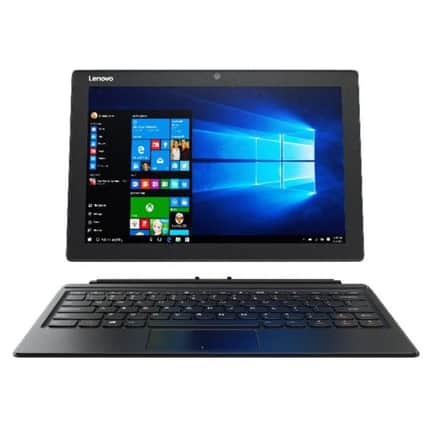Is a 2-in-1 laptop as good as a tablet?


Yet if you already own one, the cost of buying an additional tablet for just lightweight use may be hard to justify. In an ideal world, you would be able to detach the screen from the keyboard and use it by itself.
Actually, some laptops will now let you do exactly that - but with a few important caveats.
Advertisement
Hide AdAdvertisement
Hide AdLenovo, Samsung and HP are among the makers now selling convertible models on which the hinge swivels through 180 degrees and folds flat on itself. In most cases, the lid is capable of being pulled off completely and re-attached with magnets.
Prices start at just under £200 but as with conventional laptops, the more you pay the more processing power, storage capacity and memory you will get. Close to £400 is about right for an average model, but that’s far more than a standalone tablet - so it’s not something you should consider unless you need a full-blown laptop for at least part of the time.
The principal difference between a tablet such as an iPad and a 2-in-1 hybrid is the operating system. Standard tablets use either Apple’s iOS or Google’s Android operating system, both of which have been designed specifically for touchscreen devices.
Laptops, on the other hand, usually run Windows, which was designed for the desktop computer of 25 years ago and which has been dragged, kicking and screaming, into the 21st century.
Advertisement
Hide AdAdvertisement
Hide AdThe present iteration, Windows 10, does support touchscreen use without a keyboard or mouse, so it’s perfectly possible to pull the lid off your 2-in-1 and try to use it as if it were an iPad - but it won’t be long before the system’s limitations become obvious. Used with your index finger, the Windows interface feels clumsy compared to iOS or Android, and there are far fewer tabloid-specific apps available. Familiar Windows annoyances such as incompatible drivers often manifest themselves, and though Windows 10 boots more quickly than previous versions, it is a long way from the instant switch-on you expect from an iPad.
Furthermore, the performance you get will depend on the processor and memory the manufacturer has supplied - so if you go for a cheap model in the expectation that you will use it chiefly as a tablet, you should expect a fair amount of lag when you re-attach the keyboard. Battery life, too, will be nothing like that of an iPad.
The £350 Asus Chromebook Flip C101PA - which has a 10-inch screen that doesn’t fully detach but does swivel back on itself for tablet use - avoids the problems endemic to Windows by using Google’s ChromeOS operating system instead. This is increasingly common on lightweight laptops - it’s faster than Windows and kinder to the battery, but it won’t run traditional Windows programs like Photoshop or some of those you may use for work.
However, it does run Android tablet apps - and though there may be compatibility issues with some, it makes a better tablet experience than Windows 10.
Advertisement
Hide AdAdvertisement
Hide AdYour choice will depend on whether you plan to use your 2-in-1 as a laptop and occasional tablet, or vice versa. The trick will be to avoid paying for something that functions as two devices but isn’t very good at either.